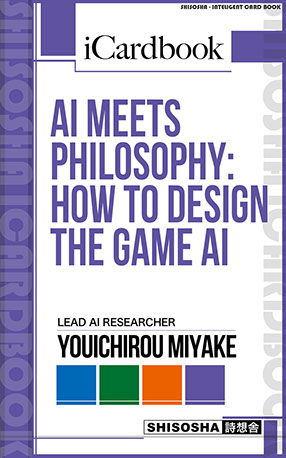Until the 80s or the mid-90s, digital games were created holistically and characters were just a single picture.
However, from the mid-90s, game stages became 3D, physical simulation was put into practical use, and game characters began to be operated by moving skeleton structures called "bones."
Therefore, powerful artificial intelligence with the ability to move characters with complex bodies in 3D space became necessary.
■References (Books, papers, Web articles, etc.)
Game Engine Architecture, Third Edition Jason Gregory CRC Press; 3 edition (August 17, 2018)
「ゲームAI開発者三宅陽一郎が語る」 主体性を持つ汎用人工知能開発には、哲学を足場にしていくことが不可欠 http://wba-initiative.org/1894/
★If you interested in this text, please have the following ebook at hand. For that, Click on the URL below.
https://society-zero.com/icardbook/010/index.html
★This article is a piece of "knowledge card" that makes up iCardbook, IAI meets Philosophy: how to design the Game AI (Yoichiro Miyake).
iCardbook, a card-type specialized book that organizes “Knowledge Cards” is a new form of book in the smartphone age.
■iCardbook Benefits:Good value for reading
・you can read it quickly in your pocket of time, e.g. commuting
・You can immediately understand the "drawing " in the author's head
・Amazon Prime members can read for free
◎About iCardbook(english)
https://society-zero.com/icard/icardbookenglish
◎About iCardbook(japanese)
https://society-zero.com/chienotane/archives/5067
■References list of "AI meets Philosophy: how to design the Game AI"







